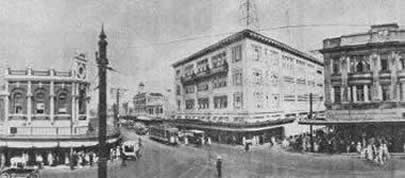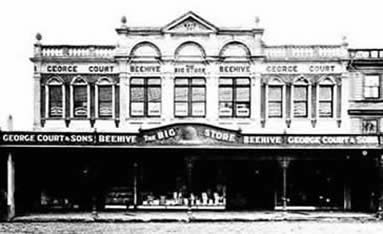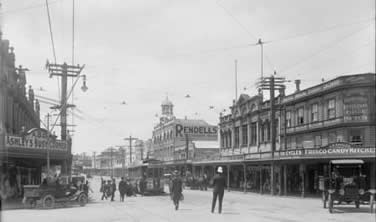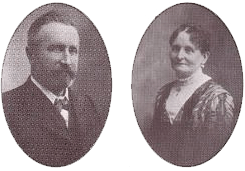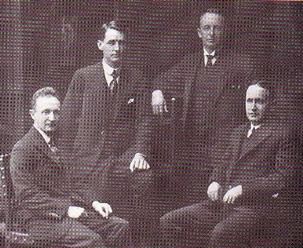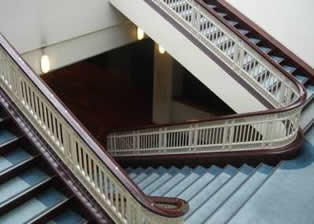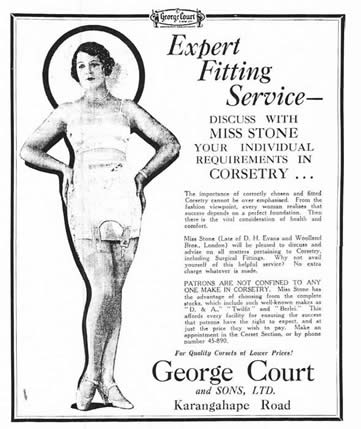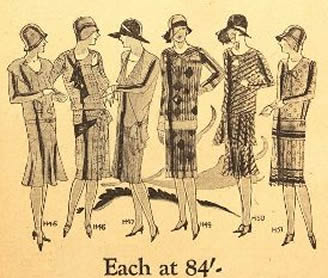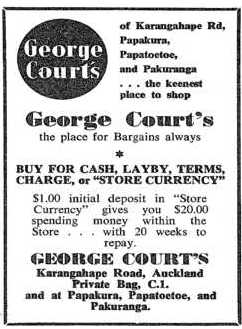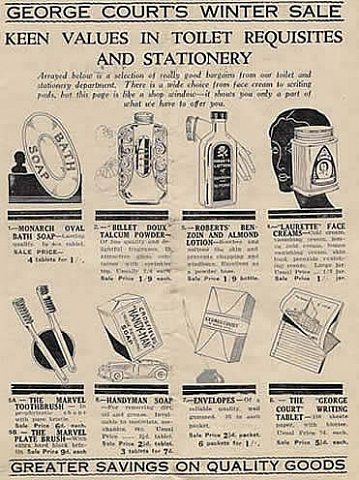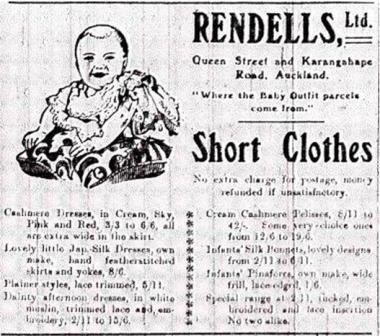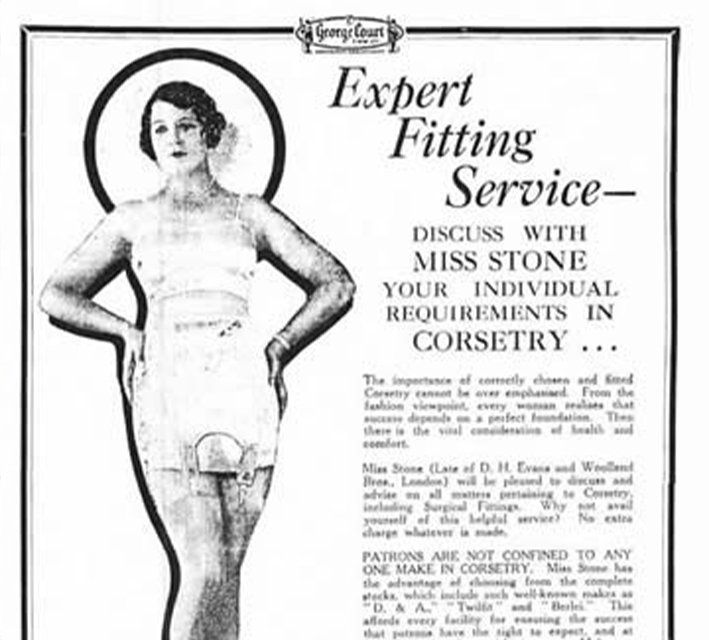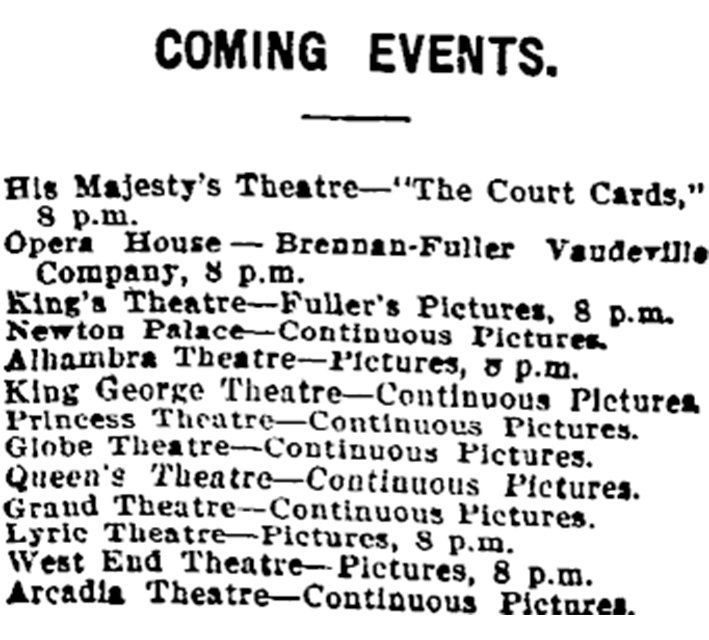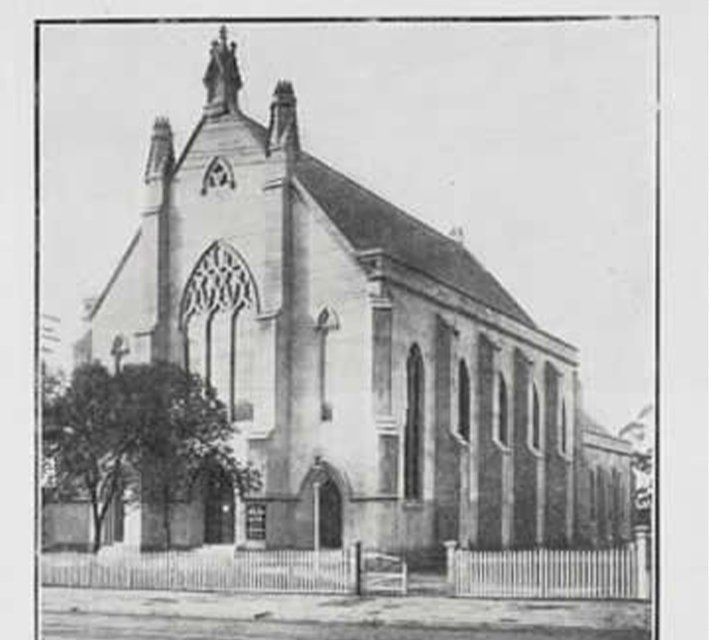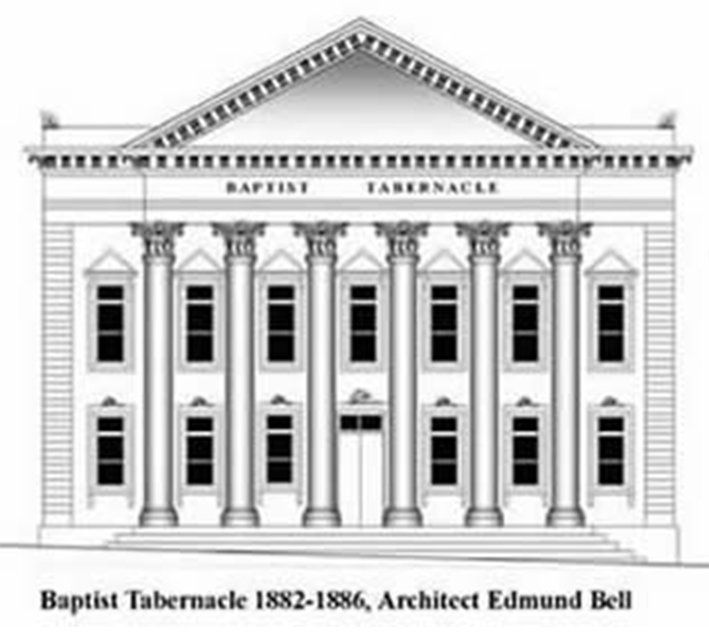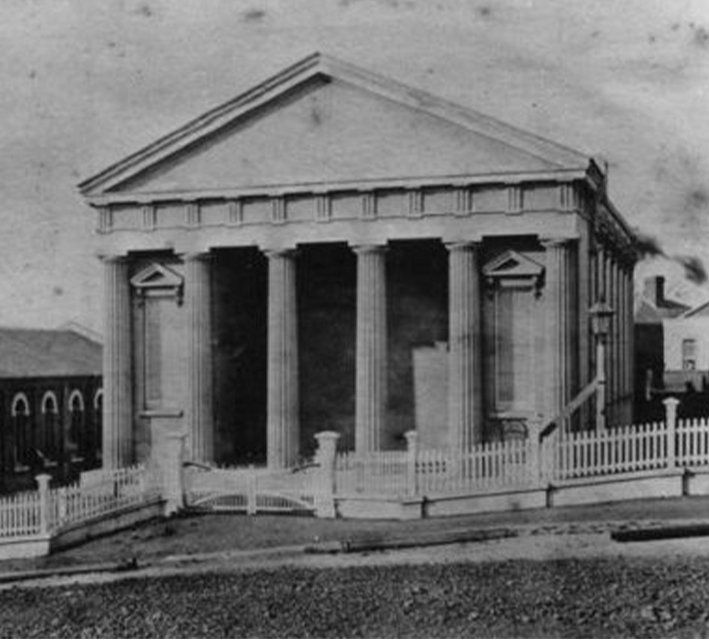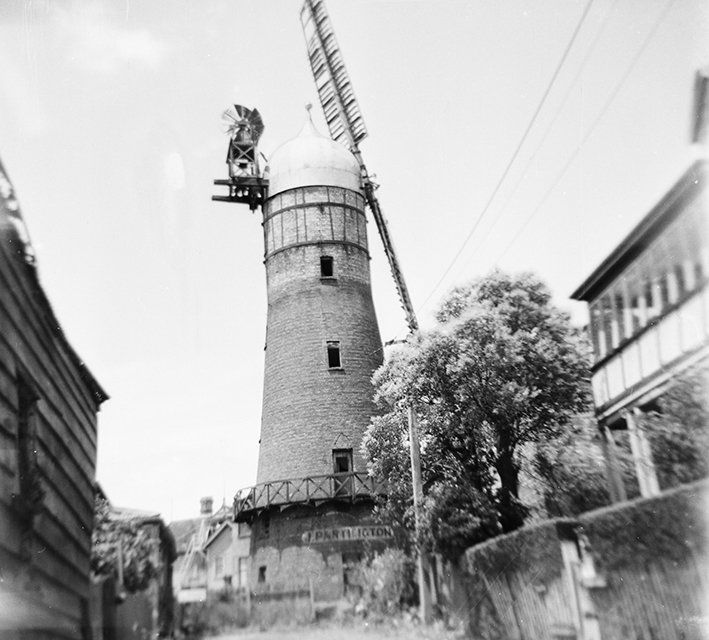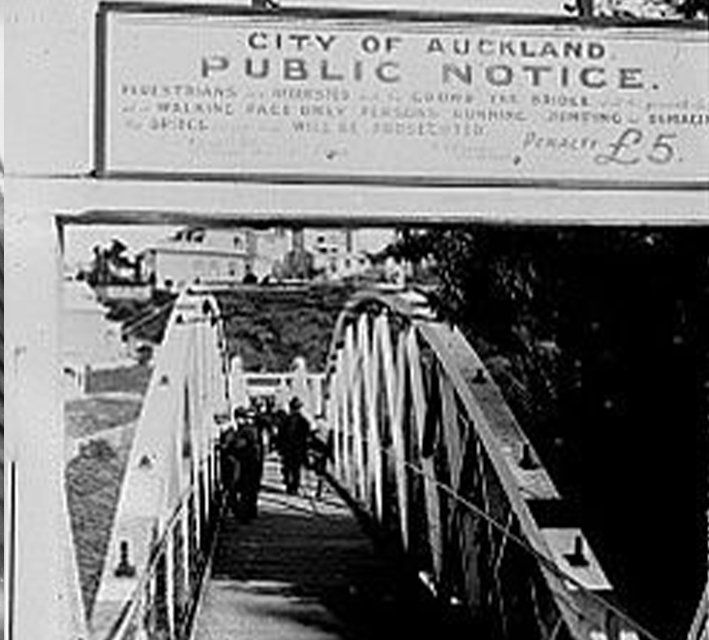The George Courts Department Store is one of K Road's landmark buildings.
Completed in 1926 it dominates the K' Road skyline. Following the closure of the store in 1988 the building was converted into being an apartment building in 1993.
In 1886 two brothers, George and Frederick Court established a drapery shop in Auckland. In 1889 they were joined by their brother John, his wife Sarah and their eight children who had just emigrated to New Zealand.
By the time John joined the partnership in September 1889 the business had expanded to a second store (possibly on the corner of K' Road & Liverpool Street). Frederick retired from business about two years after John's arrival.
The firm continued to trade as Court Brothers, drapers and clothiers, in Karangahape Road and Queen Street.
By 1902 George and John Court were operating from three shops and with their older sons entering the business they decided to dissolve the partnership and establish separate firms. This was an amicable arrangement. George remained in Karangahape Road and John took over the two Queen Street shops.
After 1910 the John Court Department Store on the corner of Queen Street and Victoria Street East was known as the DSC following the purchase by John Court of the Direct Supply Company. The John Court corner was a landmark and favourite meeting place for citizens and visitors to Auckland. It boasted several elements that were to become key attractions for most Departments Stores - a public clock on the street facade, electric lifts and a rooftop garden and tea rooms.
In 1966 John Court Limited was purchased by an Auckland-based syndicate, and in 1972 it was sold to Cornish Investments Limited of Wellington and soon afterwards the Queen Street Store was closed. [Paraphrased from Mogford, Janice C. 'Court, John 1846 - 1933'. Dictionary of New Zealand Biography.]
23 May 1911
It was a small step from selling clothing items to retailing chests-of-drawers and luggage to house them.
The new large emporiums opened departments devoted to other product lines such as furniture, carpets, clocks, watches, jewellery, china, glassware, sporting goods, sheet and recorded music, gramophones, radios etc. By this stage they had morphed into department stores.
The Big Store circa 1900
Over the years George Courts took over several small shops along Karangahape Road. Eventually the decision was made to erect a new flagship building which condensed all the different shops onto one site near the Pitt Street intersection.
The completed building is shown above, complete with an image of a beehive adorning the façade. This suggested not only a large level of activity but also implied the presence of that much loved virtue of the Victorian Period “industriousness".
George Courts 1915
By 1920 the adjoining properties were purchased to allow the construction of an even bigger building with large warehouse areas. The site on Karangahape Road was the highest point in the Auckland Street system so the construction of a big new building there would be very noticeable. The new building was to be of fire-proof reinforced concrete construction. It was designed around 1922 by the architect Clinton Savage and opened in 1926.
Savage appears to have been influenced by the work of Otto Wagner of Vienna and taken Selfidges in Oxford Street as an example. The new building was very prominent not only for its size but also its position on the ridge above the centre of Auckland At night it was brilliantly lit up by electric lights and was visible across the whole isthmus.
George Court and his wife Emily.
The four sons of George Court.
The Motto of John Court's on Queen Street was that the JC corner was “always busy" which was less of an idle boast than a plain statement of fact.
The motto of George Court & Sons was the "Big Store" referring more to its extensive range of goods rather than its actual physical size.
George Courts started as a Drapery store at a time when ready-to-wear clothing simply didn't exist. Cloth merchants were a feature of all settlements - people had to purchase cloth and sew it themselves or take it to a dressmaker or tailors. Sewing was basic skill taught to all females regardless of class, along with knitting and embroidery.
Men's outerwear clothing was always made by male tailors who occupied a nebulous position somewhere between the lower and middle class. Shirts on the other hand were usually sown by women. Certain items such as women's intimate apparel and corsets were dealt with exclusively by women.
By contrast shoes for both men and women were invariably made and retailed by men. Men had been traditionally favoured as shop assistants but as the 19th century progressed greater numbers of women were employed. Employers realised female customers were adverse to discussing certain things with men and if a store wanted to sell ladies corsets and underwear for example, having female staff was not just an advantage but really rather essential. However female assistants were also paid a lot less than their male counterparts which lead to resentment as male shop assistants perceived their jobs being stolen by cheaper labour.
By the turn of the 20th century large emporiums had developed, selling a large range of wares (George Courts being a case in point). These included shoes, corsets, hats, cosmetics and toys, underselling and outflanking many of the smaller specialist shops. This pattern was accelerated by the appearance of Ready-to-wear clothing which itself was the result of technological advances during the 19th century.
Previously all sewing was done by hand - after the middle of the 19th century the new Sewing Machines revolutionised clothing manufacturing.
Not only did prices drop but the range of items expanded. It was now feasible to create large numbers of garments in a range of colours and sizes. Larger shops and Department stores had a great advantage over smaller retailers as they could stock a wider selection of items in a burgening range of sizes.
George Courts 1926
The huge metal-framed windows were designed to display Persian carpets and fabric drops to attract attention from the other side of the street. In the centre of the building rose a grand cast iron staircase in the Neo-Greek style imported from Britain. It was wide enough to let two pairs of people to walk abreast (pair of ladies walking up, pair of ladies walking down).
The Great Staircase
English oak paneling was a feature of the stairwell and the interiors of the electric lifts. There were five spacious elevators, each large enough to accommodate perambulators, each operated by uniformed attendants.
The provision of lift attendants was not just an affectation of luxury - older ladies in the 1920s (women in their seventies and eighties) had been born in the 1840s.
Ladies of this age had often never operated any machine of any type - with the possible exception of sewing machines. The operation of a mysterious electrical device like an elevator with clanking mechanical screen doors was rather intimidating for many of them.
Moreover a significant number of older women had not received much of an education - some might not be able to read while others had failing eyesight - having a staff member announce what was in each floor and answer questions was very important.
The roof top was the location of the spacious tearooms which overlooked the childrens' playground and the roof garden with its breathtaking views of the City of Auckland and the Waitamata Harbour.
A HUGE EMPORIUM. GEORGE COURT'S BUILDING. THREE AND A-HALF ACRES OF FLOOR SPACE.
The new building initially accommodated 350 staff — 200 of them being women - this was an important detail; women were found to be happier dealing with female staff especially in the areas of underwear (now renamed “Lingerie").
Shops aimed at women could have an important advantage in the marketplace by employing larger numbers of female staff.
Like many Department Stores, George Courts positioned itself as a destination shop for women of all classes, emphasising it's range of intimate apparel.
As well as finished items of clothing, there was also a large trade in home sewing requistes - especially paper patterns for home dress-making. The Pattern Department, where dress patterns were cut and dispatched on request, despatched no fewer than half a million patterns each season. The six story George Court building on Karangahape Road was certainly the equal of stores in much larger cities overseas.
1928
Spring Fashions 1928
As Department Stores expanded dramatically in the first half of the 20th century, smaller shops and emporiums were forced to match their range and quality of products. As well as clothing, fancy goods, china, glassware, and household items the Department Stores also provided furniture, carpets, linoleum and other larger items. Farmers even stocked saddles, gramophones and had it's own jewelers. Several of them had smaller branches throughout the country.
They provided mail order service to rural customers and would deliver items to the nearest rail head or boat landing at competitive rates.
The country order department in the basement of George Courts dealt with 18,000 mail order clients every year. Staff carefully packed items from several different departments into a compact shipping crate for dispatch to distant parts of the country.
Each order would include another illustrated catalogue.
The main advantage Department Stores had over most smaller shops was they offered credit and the convenience of just paying one bill.
Instead of having to pay cash or have accounts with dozens of different shops an account with a department store meant a customer could purchase a large range of goods, have them delivered and easily pay them off over time.
Instead of dealing with a dozen different bills a Department Store customer would receive just one Statement each month.
This was tremendously attractive to the public and Department Stores competed for customers to select them as that one bill.
Around the time of the First World War there were several competing Department Stores in Auckland.
On Queen Street there were Smith & Caughey's, Milne & Choyce and John Court's DSC Store. Located on Hobson Street was the Farmers Trading Company and on K' Road was George Court's and Rendells.
Stores like George Courts needed an angle in the market place to overcome the advantage held by companies like Farmers with 53 branches. They vied with each other to provide tearooms and playgrounds to attract customers along with Fashion Shows, Art Exhibitions, Concerts and Pageants & competitions for children, many broadcast live on radio.
During the 1930s George Courts was the premier Xmas attraction for Auckland; providing an elaborate Christmas Grotto for Father Christmas along with sponsoring the Auckland Christmas Parade (which terminated at the Karangahape Road shop). Here is an advertisment placed by them in the Māori magazine, Te Ao Hou.
Te Ao Hou was published from 1952 to 1976 by the Māori Affairs Department and featured articles in both English and te reo Māori.
The roof of the George Courts building was used by the adjacent Radio Broadcasting Company as a location for their towers.
Radio was one of the most obvious manifestations of the modern age, in many ways it was even more significant during the 1920s than Motion Pictures, which at that time were still silent - Radio was delivered directly into peoples homes.
The Radio Towers captured the imagination of the public in many ways and George Court and Sons capitalised on their significance.
Auckland Star, Volume LX, Issue 218, 14 September 1929, Page 17.
The Rooftop Garden, Children's Playground and Tearooms afforded the best free entertainment in town - sweeping views from the Manukau Heads and Waitakere Ranges to the Waitamata Harbour and Rangitoto.
George Courts sponsored many events which could be broadcast either from their premises or the studios of the Broadcasting company building next door.
These included Dance music, Lectures and Competitions. A great many were focused on children and utilised the George Courts rooftop children's playground; an example being the 1939 Wizard of Oz children's party on to coincide with the release of the MGM film “MGM film").
Boosted by Window displays, The George Court Christmas Parade and the annual Christmas Broadcast by Father Christmas the Christmas Grotto in the George Court Department Store became the most significant feature of any Child's Xmas in Auckland.
Subscribe to the
Karangahape Road newsletter...
NEWSLETTER
Thank you for signing up for our newsletters.
Please try again later.
Karangahape Road Business Association © All Rights Reserved 2020
Made by Monster Valley & This Needs Doing
AUCKLAND TRANSPORT JOURNEY PLANNER:
Find out your best route to Karangahape Road by bus, ferry or train.


